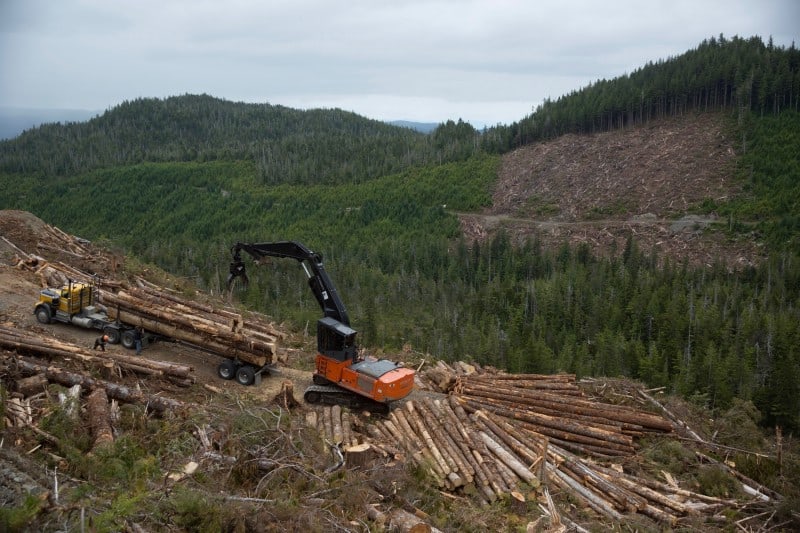– Some would have us turn our forests back to a time before any of mankind inhabited North America.
– Some suggest that we should limit our management of forests to that done by native Americans pre European times.
– Some of us see a problem with limiting ourselves to these past practices because of the current population level.
– Some of us even see that properly validated forest science carried out in environmentally sound ways can improve the sustainability of our forest ecosystems and all of the species that depend on them for habitat, store carbon and reduce our dependence on the use of non-renewable, environmentally unfriendly resources which are being extracted from their long term, safe, natural storage underground.
This article (J. For. 115(●):000–000 http://dx.doi.org/10.5849/jof.16-042
Copyright © 2017 Society of American Foresters) “fire & fuels management Aligning Smoke Management with Ecological and Public Health Goals” seems to me to be a good starting point for a much neglected discussion on why mankind has to manage our federal forest better just from the point of protecting human health.
A) Motivation for the study comes from:
1) “mismatches between the scale of benefits and risks make it difficult to proactively manage wildland fires to promote both ecological and public health.”
2) “A recent update to wildfire smoke policy proposed by the US Environmental Protection Agency (US EPA) recognized the need to restore and maintain more frequent fire regimes through intentional use of fire, while asserting that protecting human health remained the agency’s “highest priority” (Office of the Federal Register 2015). Therefore, addressing both forest restoration and air quality objectives remains a central challenge.”
3) “Hurteau et al. (2014) found that under a business-as-usual climate scenario, this escalation in fire potential is likely to increase wildfire emissions in California by 50% by the end of this century unless agencies take a more proactive approach to fire use.”
4) “… current policies have permitted regulators to curtail fires intentionally managed for resource objectives in response to nuisance complaints by a few individuals, despite the potential for such
fires to have long-term collective benefits (Engel 2013). Because the impact and likelihood of smoke increase the longer that fire is kept out of the system, extensive fire suppression can result in a vicious cycle that becomes more and more costly to escape until the system fails, as represented by extreme
wildfires (Calkin et al. 2015).”
5) “Smoke and wildfires can impact public health in ways other than particulate pollution, including ozone pollution, increased stress during and after wildfires, and strains on medical services and communication systems (Fowler 2003, Kumagai et al. 2004, Finlay et al. 2012). Despite these broader
considerations, public health regulations for smoke typically focus on a 24-hour average of PM2.5. Values that exceed 35ug/m3 are considered unhealthy for sensitive groups, which include pregnant women, young children, elderly individuals, smokers, and people with chronic respiratory problems such as asthma (Delfino et al. 2009, Kochi et al. 2010, Moeltner et al. 2013).”
Please note that this study was not offered as a be all and end all study. In my opinion, the main objective was achieved. That objective being to give order of magnitude numbers to justify further research and further stimulate the process of rethinking current regulations and forest management policies.
B) Known Facts:
1) California: “The wildfire emissions in 2008 represented 68% of all PM2.5 emissions in the state, and they caused notable public health impacts (Wegesser et al. 2009, Preisler et al. 2015)”
2) “An important spatial mismatch results from the fact that large wildfires can create smoke impacts on distant urban populations. The risk to urban populations from regional-scale smoke impacts has increased as California became the most urbanized state in the United States, with 90% of its population residing within cities that have more than 50,000 people and another 5% living in smaller urban clusters (US Census Bureau 2015). Many of those urban areas are situated in valleys or basins that have poor air quality due to human activities as well as natural conditions that often trap pollutants (Ngo et al. 2010, Nakayama Wong et al. 2011). For example, the four metropolitan areas in the United States with the highest levels of particle pollution are all located in California’s Central Valley (American Lung Association 2015). Because many urban populations already experience poor air quality during the summer, they are particularly vulnerable to health impacts from wildfires (Delfino et al. 2009, Cisneros et al. 2014)”
3) “Within the study area, daily emissions from both prescribed burns and resource objective wildfires remained well below 500 tons PM2.5 , whereas the Rim Fire had 20 days exceeding that threshold (nearly half of its entire period of active fire growth) and peaked at nearly 11,000 tons PM2.5 /day on Aug. 26, 2013 (Figure 2). During the late summer, air quality is already problematic in downwind areas such as the Lake Tahoe Basin and San Joaquin Valley”
4) “Ground-level monitoring indicated that these large smoke plumes coincided with highly polluted days in Reno, which occurred on August 23–25 and again on August 28–29, when PM2.5 values exceeded the “unhealthy for all populations” standard (55.5ug/m3) (Figure 4F). Such high levels are such a serious health concern that people are advised to avoid going outdoors. Navarro et al. (2016) reported that very unhealthy and unhealthy days occurred at 10 air monitoring sites in the central Sierras, northern Sierras, and Nevada during the Rim Fire.”
C) Data – Smoke Plume data was used to “compare differences in smoke impacts between resource objective wildfires and full-suppression wildfires within the San Joaquin River watershed in California’s Sierra Nevada, the Sierras that burned between 2002 and 2013, including 10 resource objective wildfires (totaling 20,494 acres), 17 prescribed fires (totaling 6,636 acres), 4 small wildfires (totaling 12,025 acres), and the exceptionally large Rim Fire (257,314 acres). … the limited availability of smoke monitoring data, particularly before 2007, requires a focus on modeled emissions.”
D) Findings: Reasonable Expectations from the use of increased forest management to reduce the impact on human health of catastrophic wildfires include:
1) “Our results indicate that the 257,314-acre Rim Fire of 2013 probably resulted in 7 million person-days of smoke impact across California and Nevada, which was greater than 5 times the impact per burned unit area than two earlier wildfires, Grouse and Harden of 2009, that were intentionally managed for resource objectives within the same airshed.”
2) “The combination of a warming climate and accumulation of forest fuels ensures a future with more large fires and smoke in dry western US forests. We have outlined framework to more directly account for regional-scale smoke impacts from these events using surface monitoring and satellite observations of smoke. Managing large fires for resource objectives can shift the release of inevitable emissions to conditions that minimize large-scale smoke impacts, by controlling fire spread based on available dispersion and monitored impacts and creating anchors for containing future hazardous fires. When well supported by firefighting, air quality monitoring and modeling, and public communications resources, this approach can overcome existing disincentives for achieving ecological and public health goals.”
3) “August 31 … Altogether, medium- and high-density HMS smoke from the Rim Fire on that day covered a large area (251,691 mi2) with a population of 2.8 million people, more than 2 million of whom resided below high-density smoke … In contrast, the Grouse and Harden Fires burned slowly over the early summer of 2009, with very modest emissions until the last week of June … Our analysis of HMS maps indicated that there were only 2 days when medium-density plumes overlaid substantial populations in California and Nevada, amounting to 25,000 person-days”
4) “the Rim Fire burned 55 times more area (257,213 acres) than the combined footprint of the Grouse and Harden Fires (4,695 acres), but our analysis suggests that it had at least 275 times greater impact in terms of persondays, or 5.5 times greater impact relative to area burned.”
5) “Our analyses help to illustrate and begin to quantify many of the potential benefits of resource objective wildfires compared with those of extreme fires:
– 1. Reduced fuels and reduced consumption. … We accounted for this effect within the 10,385 acres of the Rim Fire’s footprint that had experienced prescribed fires or resource objective wildfires since 2002 by changing “typical” fuel loads to “light,” which reduced estimated emissions in those areas by 53%.
– 2. More favorable dispersion and potential for less ozone. As maintenance burns reduce fuel levels over time, managers may be able to burn more safely earlier in the summer and or later in the fall, when dispersion is often more favorable and ozone concentrations are lower (Jaffe et al. 2013). Fires managed for resource objectives are less likely to result in the greater lofting and concentrations of smoke reported from extreme fires, which often deliver pollution to distant, large urban populations in lower-elevation valleys (Colarco et al. 2004, Peterson et al. 2015).
– 3. Greater ability to regulate fire spread. Because wildfires would be managed for resource objectives when weather and fire behavior conditions are more moderate than under extreme wildfires, their slower fire spread can curb daily emissions. In addition, managers can employ the push-pull tactics burn described for the Grouse Fire to regulate daily emissions based on monitored concentrations fire will become increasingly important for reducing the likelihood and extent of large-scale, extreme fires like the Rim Fire (Westerling et al. 2015).”
 This seemed like a good summary from Faith Campbell at The Center for Invasive Species Prevention.
This seemed like a good summary from Faith Campbell at The Center for Invasive Species Prevention.

